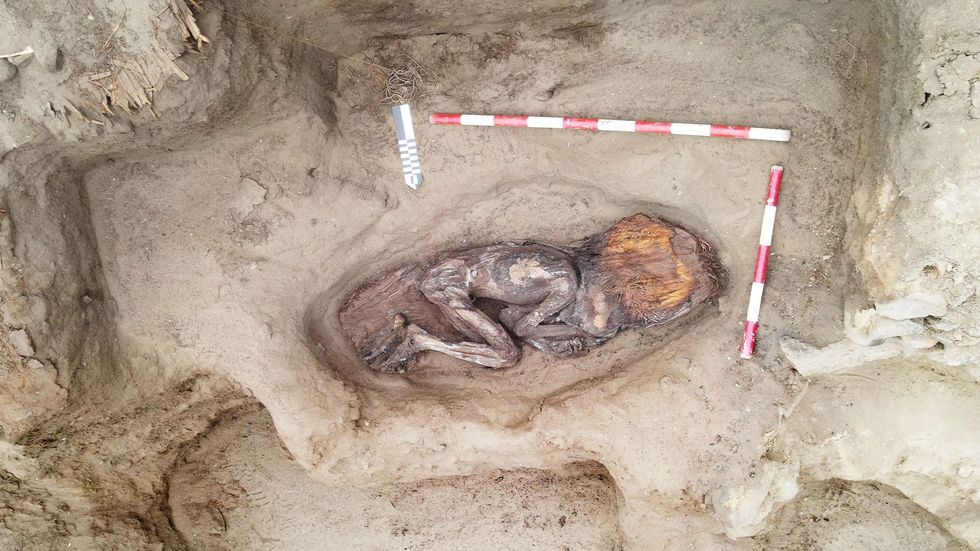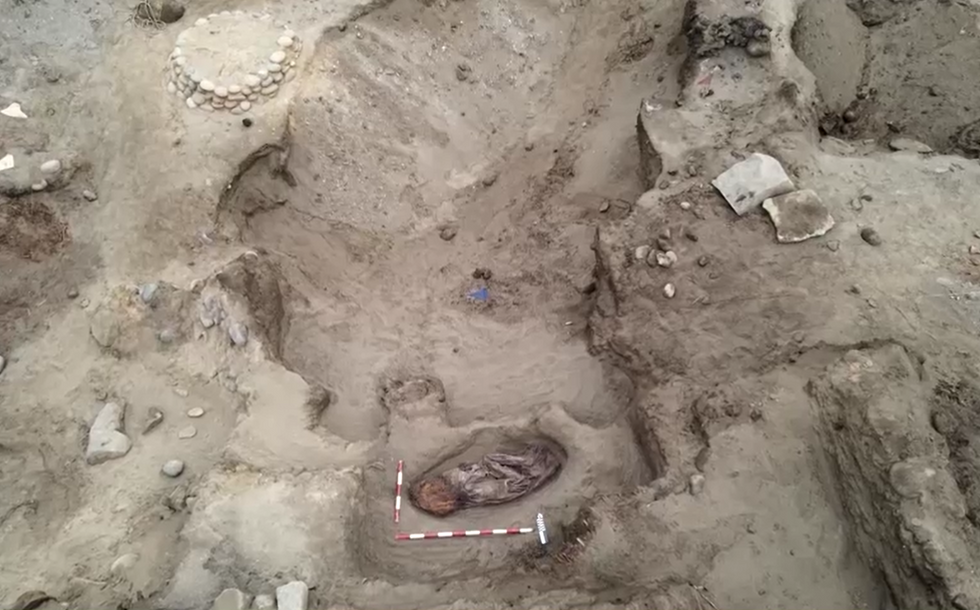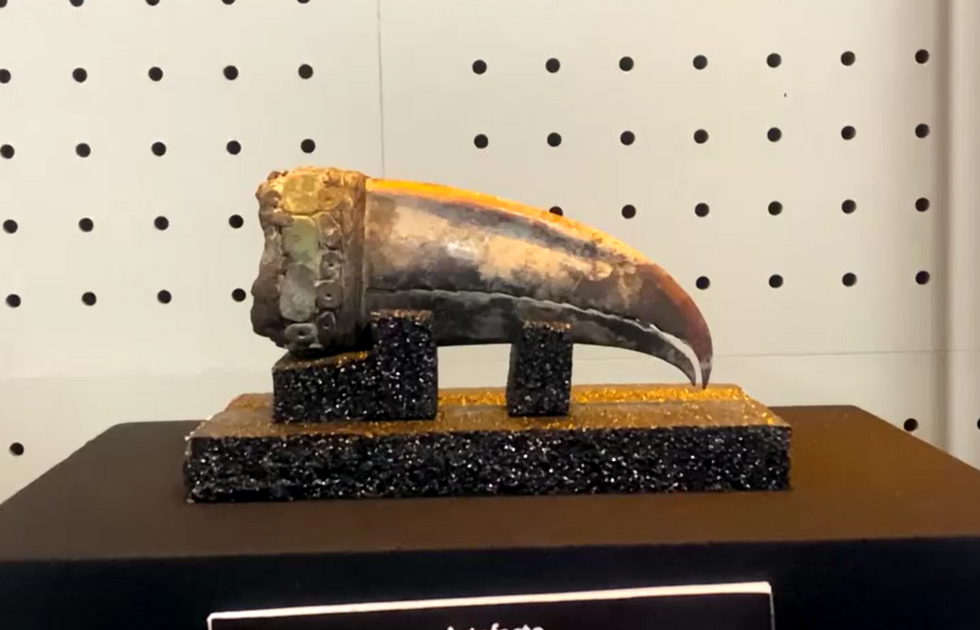Archaeologists uncover 5,000-year-old remains of 'elite woman' at old rubbish dump
Researchers have hailed the find as an 'exceptional burial' - and have hinted it could rewrite the history of the Americas
Don't Miss
Most Read
Trending on GB News
Archaeologists in Peru have unearthed the 5,000-year-old remains of an "elite woman" at the sacred city of Caral.
The remarkable discovery was made at Aspero, a site within Caral that served as a rubbish dump for more than three decades before becoming an archaeological site in the 1990s.
The finding has shed new light on the significant roles women held in what is considered the oldest centre of civilisation in the Americas.
The mummy was found with exceptionally well-preserved remains, including skin, part of the nails and hair, and wrapped in a shroud made of several layers of fabric and adorned with a mantle of macaw feathers.

The finding has shed new light on the significant roles women held in what is considered the oldest centre of civilisation in the Americas
PERUVIAN MINISTRY OF CULTURE
"This is an exceptional burial due to the preservation of skin, hair, and nails, a rare condition in this area, where usually only skeletal remains are recovered," Peru's Culture Ministry said.
The woman's funerary items included a toucan's beak, a stone bowl and a straw basket.
Preliminary analyses indicate she was between 20 and 35 years old and stood approximately 5 feet tall.
She wore a distinctive headdress made with bundles of twisted threads, which archaeologists believe represented her elevated social status.
The remains, dating to 3,000 years BC, were discovered in December.
MORE ARCHAEOLOGY BREAKTHROUGHS:
Archaeology breakthrough as 500-year-old medieval shipwreck found - 'Very important discovery!'- Expert claims to have discovered 'true location of Garden of Eden'
- Seven secret messages decoded for first time by scientists on 3,000-year-old Egyptian obelisk
- Archaeologists uncover 'rare' prehistoric chariot wheel at site of new championship golf course

Aspero, where the noblewoman was found, served as a rubbish dump for more than three decades before becoming an archaeological site in the 1990s
REUTERS
Archaeologist David Palomino told reporters the discovery challenges traditional assumptions about ancient power structures.
"What has been discovered corresponds to a woman who apparently had elevated status, an elite woman," he said.
He noted that while "it was generally thought that rulers were men, or that they had more prominent roles in society," this finding demonstrates women had "played a very important role in the Caral civilisation."
The Caral society flourished between 3000 and 1800 BC, developing alongside other great ancient cultures in Mesopotamia, Egypt and China.
The city is located in the fertile Supe valley, approximately 115 miles north of Lima and 12 miles from the Pacific Ocean.

The woman's funerary items included a toucan's beak (pictured) a stone bowl and a straw basket.
REUTERS
In recognition of its historical significance as one of the earliest complex societies in the Americas, Caral was declared a Unesco World Heritage Site in 2009.
Peru's Culture Ministry also noted that this discovery follows other significant elite burials found at Aspero in recent years.
These include the "Lady of the Four Tupus" discovered in 2016 and the "Elite Male" found in 2019.
Elsewhere in Peru, researchers recently uncovered an ancient tomb in the country's southern region containing the remains of approximately two dozen people believed to be battle victims.









